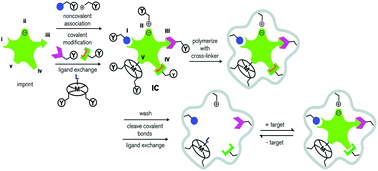Molecularly imprinted polymers’ application in pesticide residue detection
Abstract
Molecularly imprinted polymers (MIPs) are produced using molecular imprinting technology (MIT) and have specific analyte-binding abilities and unique properties, including chemical and thermal stability, reusability, high selectivity, and high sensitivity. The application of MIPs in the detection of pesticides represents an advance and a superior scientific approach owing to their detection and characterization of trace levels in comparison with other methods. In this review, we have summarized the pre-treatment extraction of pesticides with different types of molecularly imprinted polymer for the detection of single and multiple pesticides by elaborating upon their specific extraction efficiency. The importance of different polymerization methods, functional monomers and cross-linkers is highlighted. The aim of this study is to investigate the importance of the application of MIPs in the detection of pesticides and recent advances in the last few years to overcome the limitations of previously developed methods. Existing restrictions and required future aspects are discussed.

- This article is part of the themed collections: Recent Review Articles and Recent analytical chemistry science from China


 Please wait while we load your content...
Please wait while we load your content...